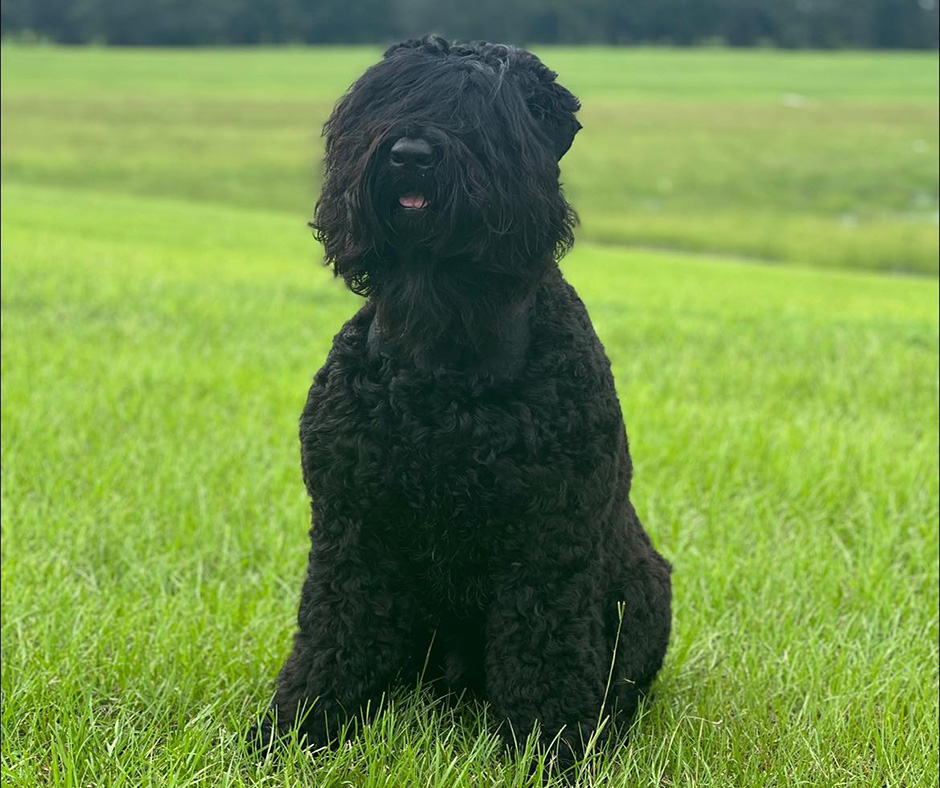679 – Black Russian Terrier: “The Black Pearl of Russia”
Black Russian Terrier: “The Black Pearl of Russia”
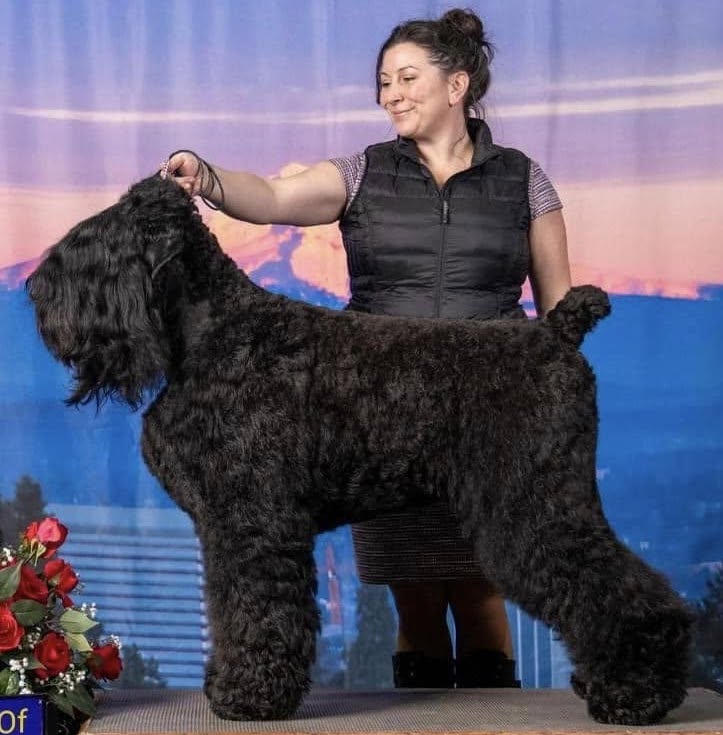
Emily Fagan showing one of her Black Russian Terriers.
Host Laura Reeves is joined by Emily Fagan, breeder of Black Russian Terriers, for a Love the Breeds episode talking about the “big black fluffy bearded beasts” that have become her “spirit animal.”
“Like they are the Black Pearl of Russia and they really are like the hidden gem. Most people, they see them and they’re like, ohh, boy, that’s kind of this big black scary kind of looking dog. And they’re so stoic and regal in public and then they come home and they’re absolute goofballs, complete clowns,” Fagan said.
“A short background history that Stalin basically was jealous of the Germans, you know, and their wonderful police military dogs. So he’s like, you know what, I’m gonna make a superior breed of dog for military and police work. He got a bunch of scientists, geneticists together and actually started developing the Black Russian Terrier. The four main contributors are the Rottweiler, the giant Schnauzer, the Newfoundland and the Airedale Terrier. So there’s the terrier. But they are very much NOT a terrier.”
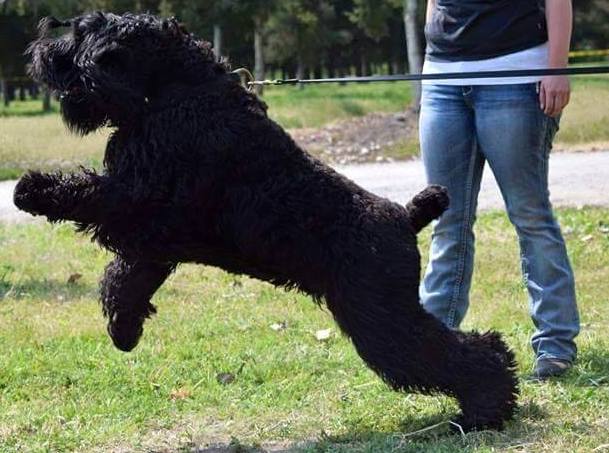
Black Russian Terrier training for “bite work” competition.
The breed was utilized by the KGB, and still is today by its successor agency, the FSB, as well as being used in the Russian prison system. It’s job, Fagan said, was to terrify people. And they’re very good at their job.
The best owners of BRTs are not first-time dog owners, Fagan said. She added that structure and very defined rules are critical.
“You do need to be fair because they are very smart,” Fagan noted. “This is not an old school, put the dog on its back. You can’t do that. Absolutely not. You would ruin your relationship with this breed because it’s built on trust too. You have to build respect. So a person who understands a structured environment is really going to thrive.”
599 – Norwegian Elkhounds: The OG GPS Tracking System
Norwegian Elkhounds: The OG GPS Tracking System
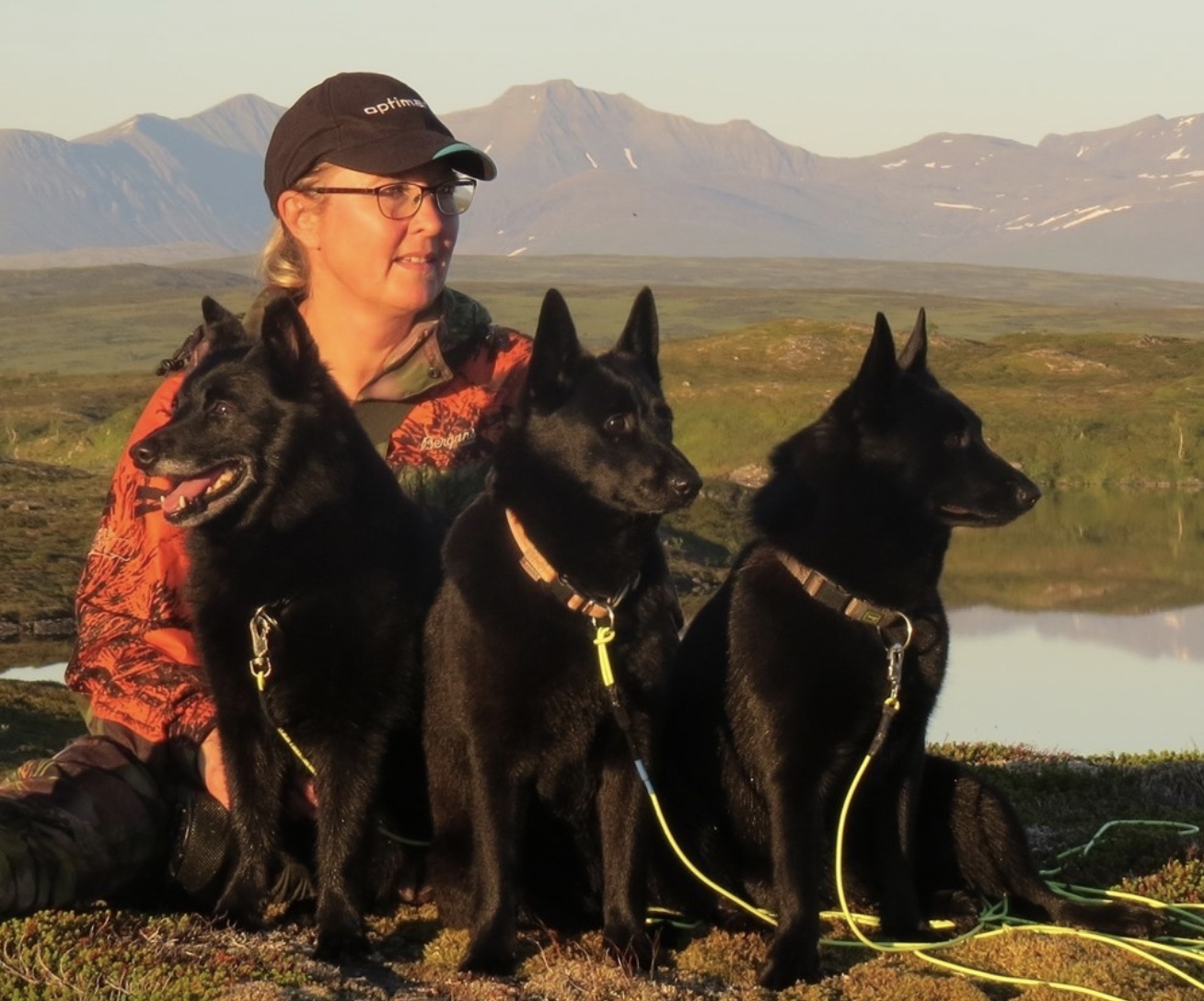
Kamilla Engen with her dogs. In Norway, Grey and Black Norwegian Elkhounds are recognized as separate breeds.
Kamilla Engen, Norwegian Elkhound breeder, judge and moose hunter in Norway, joins host Laura Reeves for a Love the Breeds discussion of this ancient hunting breed. Engen judged the breed’s US National Specialty in May.
Per the Norwegian Elkhound Club of America, The Norwegian Elkhound is bold and energetic, a hardy gray hunting dog known for his lush silver-gray coat and dignified but friendly demeanor.
In appearance, a typical northern dog of medium size and substance, square in profile, close coupled and balanced in proportions. The head is broad with prick ears, and the tail is tightly curled and carried over the back. The distinctive gray coat is dense and smooth lying.
As a hunter, the Norwegian Elkhound has the courage, agility and stamina to hold moose and other big game at bay by barking and dodging attack, and the endurance to track for long hours in all weather over rough and varied terrain.
The durable Elkhound is among Europe’s oldest dogs. They sailed with the Vikings and figure in Norse art and legend.
You Get the Dog You Deserve
“(These are) excellent family dogs,” Engen said. “We also enjoy our nature. And it’s the perfect companionship if you are hiking, going in the mountain. I always walk my dogs and so they are good off leash. I always said that you get the dog that you deserve. If you want the dog to get back to you, you have to start with that. It’s a training. Of course. But if you start early and make it positive to come back to you, yeah, of course (they come when called). Because the ability that makes it an enormously great hunter is the ability to cooperate with the hunter.
“We have two kinds of forums of hunting that use these dogs. The one is the most usual is loose. You let the dog loose and you have a GPS tracker on it so you can see where it is and you can also see when it stands still and you can hear the barking. Then you have contact with a moose.
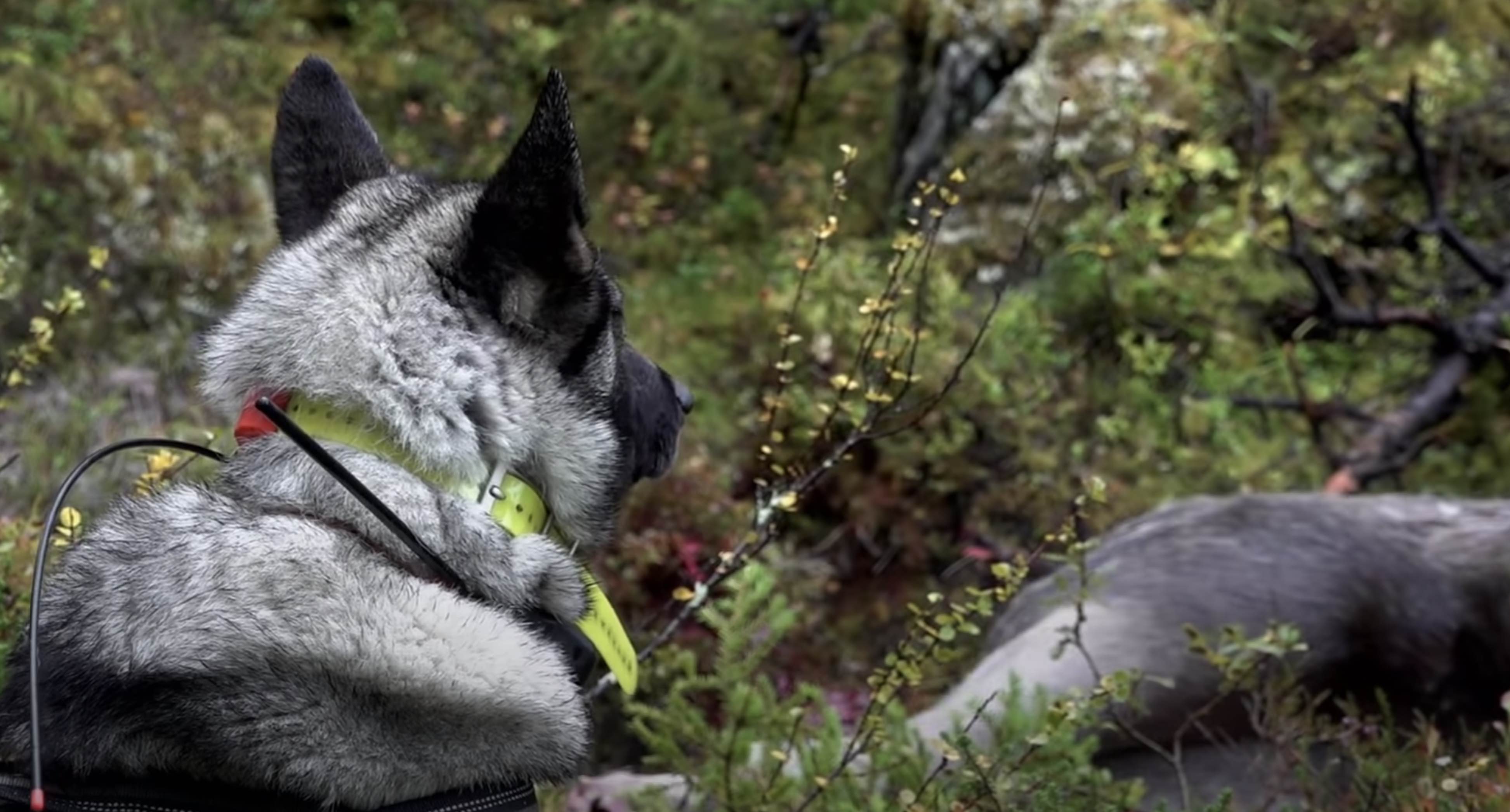
This Norwegian Elkhound tracked down a wounded moose that was hit by a car so it could be humanely dispatched.
“The other one is with a very long leash, 5-6 meters. And let me just explain a little bit why we do that in Norway. Norway is a tiny country compared to the United States and we have distinct areas that we are allowed to hunt. In these areas you can hunt a certain number of mooses. OK and these dogs? They run far. And the and a moose doesn’t always stop (in the confined area). So, if you have small areas, it’s very helpful to have a leash because then you can control it a lot more and you can search a whole area.
“They locate the moose from a quite a long distance. They are incredible, their ability to do this. Then they located, they run over to it and hopefully they are able to get the moose to turn around towards them. To defend themselves. This is an old, old instinct that moose have from wolves and bears. And then the dog barks. From old times before the GPS trackers, the hunter hears that noise. And that was their GPS.”
333 – Pyrenean Shepherd: Small, Smart, Rare
Pyrenean Shepherd: Small, Smart, Rare
Pyrenean Shepherd fancier Joni McKeown shares details of this endangered herding breed from the Pyrenees mountains of France.
The small herding breed accompanied the Great Pyrenees guarding the flocks that moved between the isolated and remote regions of the mountains and valleys.
“When people come to shows, everyone thinks they are cute. They have a mischievous, funny sense of humor, and a really cute little head, but this is a working dog. It should not just be a pretty face,” McKeown said.
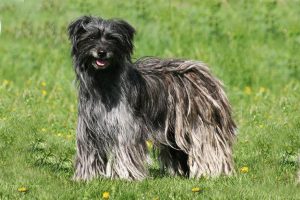
A brindle PyrShep showing cording on the back half of the dog as is correct.
From the AKC website: These tough, lean, and lively herders, famous for their vigorous and free-flowing movement, come in two coat varieties: rough-faced and smooth-faced. Roughs have profuse, “windswept” hair above the muzzle and a generally harsh coat; smooths have short facial hair, a finer-textured coat, and a slightly longer, pointier muzzle. Both varieties of this sinewy, rectangular breed come in many colors and patterns. Pyr Sheps see the world through dark almond-shaped eyes conveying an alert and cunning expression.
PyrSheps are a prime example of why pet owners should learn the history of a breed in order to better understand its temperament and behavior.
“Because of their job, the breed is just hardwired to see the world as friend or foe. There’s not a lot of grey area for them. Preserving that heritage is so important. French judges fuss at us for how friendly our dogs are. We kind of live in a world where we need the dogs to be friendlier. But we’re losing genetics if we start turning a Pyrenean Shepherd into a Golden Retriever (temperament). You can’t expect to have that across the board,” McKeown said.
Faces rough or smooth
Differences between the two “types” are notable. Head and body structure are different and both types are born in the same litter. Traits definitely pass together, McKeown observed.
The rough face develops a characteristic “windblown look” of hair on its face, she added.
“This is the only breed that only cords on the back half of the body. In France all the adult dogs are corded. Different dogs have different types of cords. In the US you don’t see that many people cording the dogs. It’s a very rustic look. But you can keep them brushed out,” McKeown said.
The standard offers no preference for corded or not in the show ring.
The coat is described as half way between sheep and goat hair. It has a very coarse texture. Exhibitors are encouraged to not do a lot of bathing or blow drying as it changes the coat texture. The standard also includes strong penalties for trimming anything but the pads of the feet.
Best owners
PyrSheps can live 17 to 20 years. They need a dedicated owner who will give them lots of activity, McKeown noted.
“These dogs really, really need a job. The breed is brilliant. Almost frightening sometimes the things they figure out. They’re not always the best breed for a novice dog owner. More intense even than other herding breeds because they’re closer to the roots,” McKeown said.

